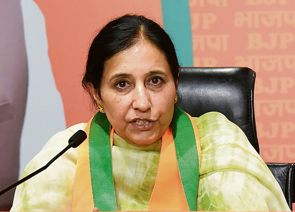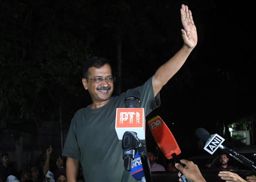
Beware: Trump seeks a partnership with India which is self-centred and self-serving.
MK Bhadrakumar
US President Donald Trump’s telephone conversation with Prime Minister Narendra Modi on August 15 went beyond a protocol gesture. Such conversations by statesmen are carefully scripted and Trump came prepared. The White House readout highlighted that “the leaders resolved to enhance peace and stability across the Indo-Pacific region by establishing a new 2-by-2 ministerial dialogue that will elevate their strategic consultations.” The elevation of the US-India strategic dialogue to a format involving foreign and defence ministers is significant both for its timing as well as its focusing on a specific “hot spot” in contemporary world politics.
It signifies a leap forward from the US-India Joint Vision Statement on Asia-Pacific, issued in January 2015 during the visit of former US President Barack Obama to India. The leitmotif, once again, is China’s rise, lurking behind the code word “peace and stability across the Indo-Pacific”. (India has no meaningful role to play on the North Korea problem.) For the Trump administration, the proposed 2+2 enterprise with India makes great sense at a juncture when it is steadily losing influence in the Asia-Pacific region. China has not only replaced the US as the number one trading partner of ASEAN countries, but is also the principal driver of growth in that region. The ASEAN countries have signed on with China’s belt and road initiative. Singapore has already put its hat in the ring, aspiring to be a regional hub “linking up the belt and road”.
The 50th anniversary meeting of ASEAN foreign ministers in Manila recently made it a point to “warmly welcome” the improving cooperation between the grouping and China, especially the adoption of the framework of a code of conduct in the South China Sea. Significantly, its communiqué neatly ignored the Permanent Court of Arbitration Award on the South China (July 2016). What emerges is a trend of stability in the interactions between ASEAN and China over South China Sea issues. Philppine defence minister Delfin Lorenzana since disclosed in Manila last week that China had assured that it would not occupy new features or territory in the South China Sea, under a new “status quo” brokered by both sides to strengthen relations. Alongside, Philippine foreign minister Alan Peter Cayetano said Manila was working on a “commercial deal” with China to explore and exploit oil and gas resources in the disputed areas of the South China Sea with an aim to begin drilling within a year.
ASEAN is gently jettisoning American mentorship in the geopolitics of the South China Sea, which significantly diminishes the role of the US, Japan and Australia in regional politics. (Japan and Australia are the only two Asian countries with which the US has existing 2+2 formats.) The three musketeers had to issue a separate joint statement in Manila to articulate their stance on the South China Sea on the sidelines of the recent ASEAN meet. Sourabh Gupta, senior fellow at the Institute of China-America Studies in Washington, wrote last week, “The current easing cycle (in ASEAN-China relations)…will lend itself to a period of strategic calm in this critically important waterway. Without an agitated local claimant on whose behalf it can claim to be intervening to uphold the stability of the South China Sea, the US has few other tools at its disposal to assert its relevance and authority in this body of water other than to endlessly navigate its length and breadth.”
Simply put, the US needs company and it explains the overture to India. How the newfound 2+2 format would translate on practical plane will be the big question. Will India join the US-led “joint patrols” to poke at China, which the US Pacific Command has eagerly sought? The US overture coincides with the two-month-old India-China standoff at Doklam. Will the optics of the tighter US-Indian strategic embrace inspire other regional states to get on board in a renewed US-led containment strategy against China? Interestingly, India intends to host the heads of government or state of all ASEAN countries as chief guests at next year’s Republic Day celebrations.
However, curiously enough, even as Trump telephoned Modi, the chairman of US Joint Chiefs of Staff committee, Gen Joseph Dunford, was setting out on a three-day visit to China to strengthen military ties. Again, the US Treasury Department released in Washington the data that China has reclaimed its position as the world’s largest holder of US treasury securities, with total holdings touching a whopping $1.1465 trillion as of June. The Chinese foreign ministry took note of the US treasury report as “another reflection that China and the US have formed a pattern of deeply converging interests and mutual dependence”.
Isn’t the Modi government missing something in all this? While receiving Dunford in the Great Hall of the Peoples in Beijing, Chinese President Xi Jinping expressed satisfaction over the trajectory of Sino-American ties in the Trump era by quoting a saying, “A rainbow appears after winds and tides.” The worrying question must be asked: What does India get out of wading into South China Sea disputes? Hasn’t enough damage been inflicted by the Modi-Obama Joint Vision Statement, which, arguably, marks the turning point when the India-China relationship that the UPA bequeathed on a stable and predictable track, began a free fall to descend to the Chumbi Valley where we are now hearing war drums?
In the eagerness to gain status, Indian diplomacy overlooks substance. What signal does the creation of a US-Indian axis to “enhance peace and stability across the Indo-Pacific region” would convey at this juncture in the Asian power dynamic? Yet, Trump won’t militarily intervene in a war between China and India. He is doing brilliantly well. Trump hopes to mitigate US’ marginalisation on the South China Sea theatre while on the other hand keeps strengthening the economic interdependency between the US and China and aligning it with the needs and requirements of his “America First” doctrine, apart from taking Xi’s help to resolve the North Korea problem.
Trump informed Modi on Independence Day that the first shipment of American crude oil is leaving Texas for India this month and that he eyes India as long-term buyer. The White House readout has underscored that Trump single-mindedly pursues a transactional partnership with India — self-centred and self-serving. On Modi’s part, it’s about time to ask Trump what he could do for India other than selling Texas oil at asking price. The intelligent thing to do in diplomacy is to look beyond status and seek substance.
The writer is a former ambassador



























